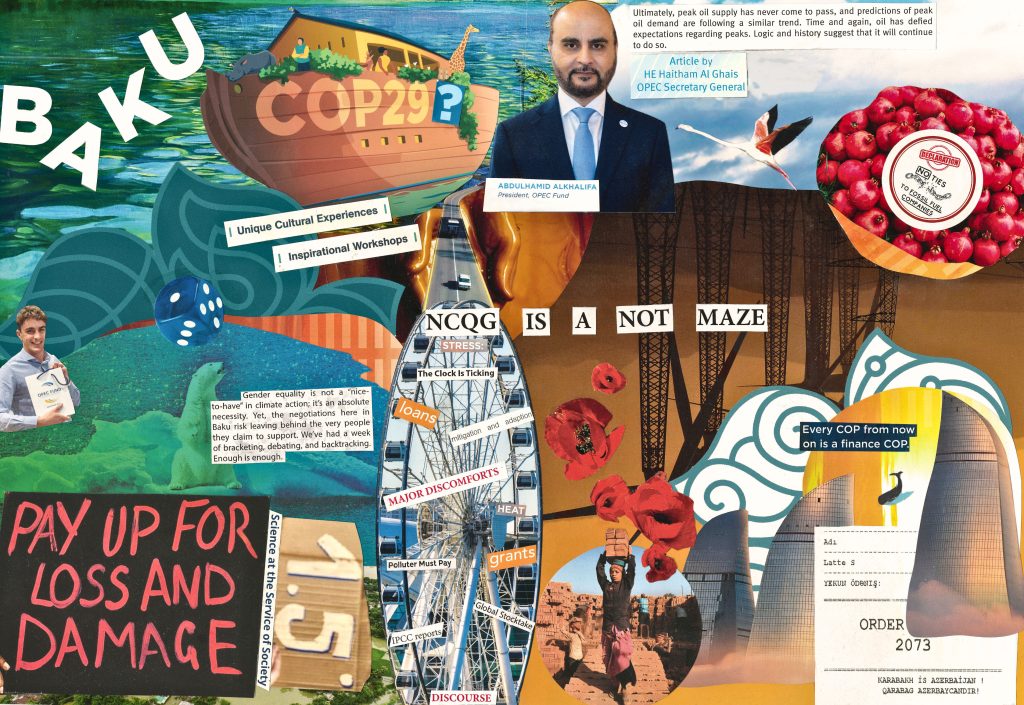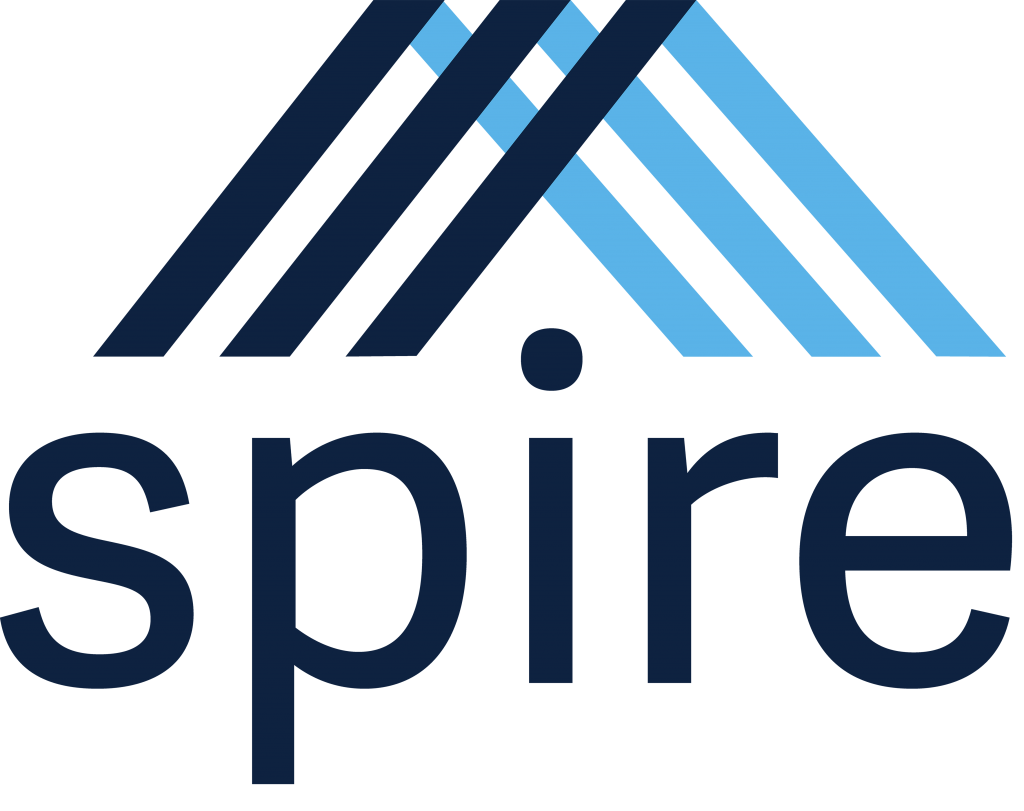Baku
By Clea Harrelson
This piece was created using only materials gathered from the 29th United Nations Framework Convention on Climate Change (UNFCCC) Conference of the Parties (COP29), held in Baku, Azerbaijan in November 2024. I attended this event in person with the University of Maine observer delegation, and each day that we entered the conference space, I was struck by the amount of materials around us. The smell of the fresh plywood floors and walls reminded us that this space was actually the overhauled shell of a stadium intended for Olympics that never came. Each conference room was equipped with an ample array of screens, headsets, and other technological infrastructure and each exhibit hall adorned by stacks of branded paper, carefully arranged within million dollar booth displays. I couldn’t bring home the feel of the stadium or the conference rooms directly, so I brought home the paper books and pamphlets shoved into my hands by volunteers at booths. Each of the logos, words, images, and people that I highlight here come from specific moments of interaction at this event and reflect how people and groups on site were responding to some of the big questions of COP29 through material representations. Two central questions swirling in news and policy forums prior to COP29 were what it means to have oil countries engaged in human rights violations (see receipt) hosting climate conferences and whether countries would be able to agree on a new budget for climate action, often called the “New Collective Quantified Goal.” This assemblage of materials is one way to understand how actors who participated in COP29 critiqued or advanced narratives of climate finance, climate (in)justice, and climate futures.


